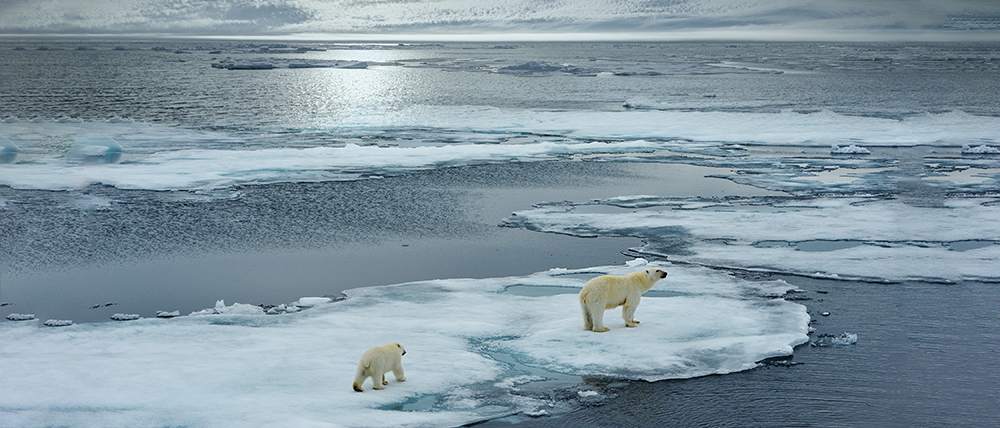Caching the Planet for a Better Future

The threat of climate change is real. It’s happening. Despite what some people lead us to believe, we are and will be responsible for wiping out numerous species of animals and plants.
We are experiencing the highest global temperatures ever recorded and the lowest levels of Arctic Ice and scientists have predicted that sixty per cent of primate species are threatened with extinction. But what are we doing about it?
Alongside a (mostly) global campaign to cap global warming and limit our greenhouse gas emissions, scientists, governments and private companies are attempting to bank nature. Banks containing samples of food crops, living cell cultures from more than 1,000 species of animal, ice from rapidly melting glaciers and many more specimens are being built in an attempt to save our disappearing planet.
Caching the Planet for a Better Future
Svalbard Global Seed Vault, Spitsbergen Island, Norway
Researchers in Norway have collected what they hope will serve as a backup of the worlds agricultural crops stored inside cavernous, ice-crusted chambers deep beneath the rock and permafrost of Plataberget Mountain.
This cache of over 5,000 species of food crops contains the genetic diversity needed to breed new varieties of crops that can withstand the unexpected and inexplicable changes in climate.
Stored at 0 degrees Fahrenheit, these seeds could potentially be kept viable for thousands of years.
Amphibian Ark, various locations
There are more than 180 amphibian research facilities in 32 countries. In these facilities, Herpetologists breed what they call “captive insurance colonies” with the aim of saving amphibians from extinction.
Species of amphibian, such as the Panamanian Golden frog that hasn’t been seen in the wild since 2009, are being bred in captivity to rebuild the species, before one day being returned to the wild.
Coral Restoration Foundation, Florida Keys
The Coral Restoration Foundation keeps the world’s largest collection of ocean-nursery-raised corals. In the wild, these corals are increasingly endangered by overfishing, agricultural runoff, rising water temperatures and ocean acidification.
Coral reefs are some of the richest ecosystems on the planet and provide food and shelter for around a quarter of all known marine species. The foundation grows coral in an underwater nursery before it is taken out to the ocean and glued into place to repopulate faltering reefs.
Exotic-Animal Milk Bank, Washington
The Smithsonian’s National Zoo in Washington has the largest collection of frozen exotic-animal milk in the world with 16,000 frozen samples of milk from approximately 180 species. Milk is essential to the survival of mammals and these stores can provide nourishment for the most vulnerable members of any species: babies.
The Frozen Zoo, San Diego
The living cells of more than 1,000 species from around the world, including some that are believed to be extinct, are kept in a small room in the San Diego Zoo. Preserved in liquid nitrogen, when thawed, the cells can be used to grow new cells.
U.S. National Ice Core Laboratory, Lakewood, Colo.
This giant, sub-33-degree freezer holds over 62,00 feet of ice rods created with machines out of ice sheets and glaciers. Studying air bubbles, dust and ash particles, isotopes, gases and organic materials frozen in the ice helps scientists understand past, and a predict future climates.
The oldest ice stored in the lab is 417,000 years old and scientists are currently searching for a new site to drill a 1.5 million-year-old ice core.
The Future
The plan is to not only study these specimens but to deliver them to the future when science will hopefully be more advanced than it is now. If Geneticists are already capable of cloning animals, rewriting genomes, fabricating synthetic DNA; Glaciologists can reconstruct ancient climate and atmospheric patterns and predict future ones by studying molecules in ice; Botanists can sprout flowers from seeds buried in the Siberian permafrost – then what we will be capable of in a hundred- thousand- or even -ten-thousand years time?
While these preservation and study facilities could help us to better understand climate change and protect thousands of species from extinction, they themselves are not immune to climate change.
In 2016 the Svalbard Global Seed Vault flooded due to changing temperatures in the surrounding area. Fortunately, none of the specimens were harmed. In April 2017, 590 feet of ice cores stored in a cold-storage facility belonging to the University of Alberta defrosted due to a freezer failure. Any number of things could go wrong; power failures, faulty backup generators, fires, floods, natural disasters, war, theft, neglect – a host of never-ending scenarios could all destroy years of research and the future of planet earth.
2EA® are registered Low Carbon Energy Assessors, Consultants and ESOS Lead Assessors, offering both energy management and reduction services ranging from CCL/CHPQA Management to Energy Saving Opportunity Scheme (ESOS) and Carbon Reduction Commitment (CRC) consultancy.
For more information, please contact us either by email to info@2ea.co.uk or by calling 01293 521 350.
Source: https://www.nytimes.com/2017/07/13/magazine/seed-vault-extinction-banks-arks-of-the-apocalypse.html


